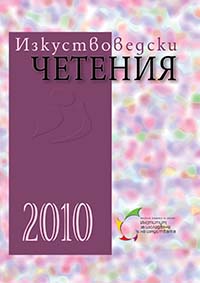Приложната графика в България през модерната епоха – междукласицизиращите тенденции и модернизираната визия
Applied Graphics in Bulgaria in Modern Times – Between Classical Tendencies and Modern Vision
Author(s): Maria MitevaSubject(s): Fine Arts / Performing Arts
Published by: Институт за изследване на изкуствата, Българска академия на науките
Summary/Abstract: The study focuses on applied graphics through the prism of acquired European experience and the transfer of key stylistic skills and developments. On the basis of the theoretical premise of two stages (models) - the classicistic one and the modern are examined the development of polygraphy in Bulgaria. Special attention is dedicated to the technical equipment and possibilities. Data is provided about the beginning of the processes starting from the Bulgarian Revival. The classicistic imagery is based on the transfer of art models of the 18th and 19th century from the European printing houses. The classical imagery was based on the transfer of art models from the 18th and 19th century from the European printing houses. It was literal and predetermined by the import of stereotype plates – typographic ornaments and illustrations. The possibility for a publication to be ‘original’ was limited in the framework of the selection and combination. The real modernization or the stage of modernization began with the raise in quality of the printing equipment, the mastering of new methods for reproduction and layout equipment. The stylistic characteristics were those of Secession and Symbolism. The ‘Bulgarian style’ as a specific transition between the two stages was the widely used in applied graphics. It was based on classical composition and form and was saturated with traditional ornaments and symbolism. The journals Meditzinska Beseda, Izkustvo and Artist were presented in the study as concrete examples. The first journal was published for quite a long period of time and passed through the classical tendency and the modernized imagery. The last two publications were examined in a comparative manner. In conclusion the author draws out the main characteristics of applied graphics in modern times as it is locally perceived by the leading European art practices.
Journal: Изкуствоведски четения
- Issue Year: 2010
- Issue No: 6
- Page Range: 300-308
- Page Count: 9
- Language: Bulgarian
- Content File-PDF

